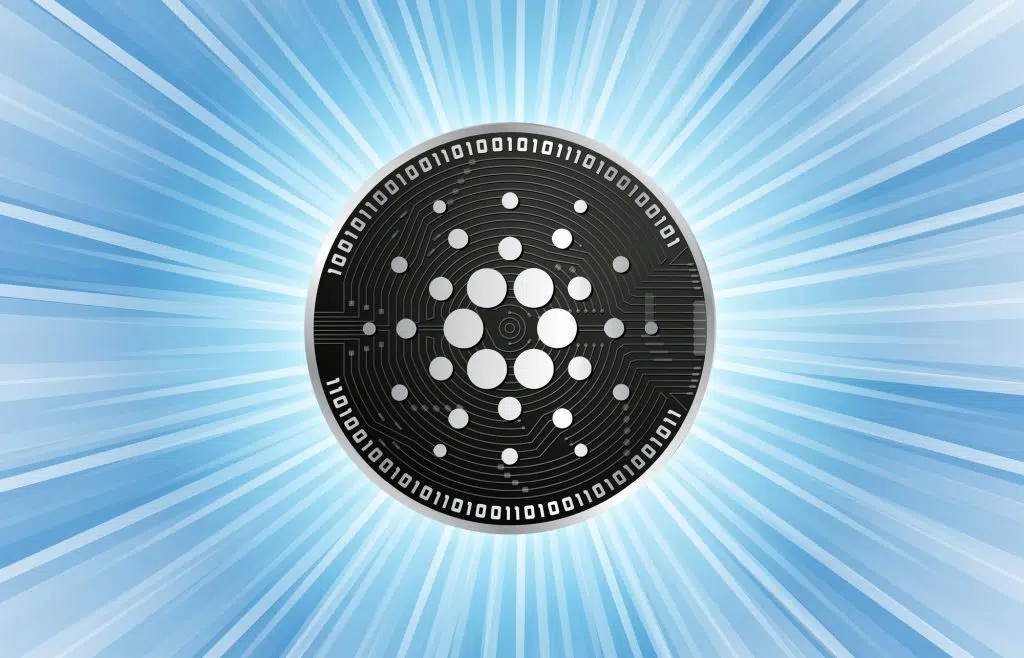Contents
The blockchain industry is constantly evolving, and new projects are emerging all the time. Whether you’re a novice or an experienced crypto enthusiast, it may be difficult to keep up with all the new developments.
In this blog post, we’ll be looking at two prominent blockchain projects, Polkadot and Cardano, and discussing the differences between them. We’ll explore their respective features, technologies, and use cases to help you gain a better understanding of which project may be best for you.
What is Polkadot?
Polkadot is a revolutionary blockchain-based protocol that allows for interoperability between different blockchain networks. With Polkadot, data and assets can be transferred across different networks, allowing for seamless transactions and communication.
The brand new newsletter with insights, market analysis and daily opportunities.
Let’s grow together!
Furthermore, Polkadot features a unique consensus algorithm, which is based on a proof-of-stake mechanism. This allows users to stake their tokens to create a consensus and validate transactions on the network.
The Polkadot platform is also designed to facilitate the development of decentralized applications (DApps) and smart contracts. With Polkadot, users can create custom tokens and use them to represent real-world assets, such as stocks, bonds, and commodities. Additionally, users can create their own parachains, which are custom blockchains that are connected to the Polkadot network, allowing them to benefit from the scalability, security, and interoperability of the Polkadot protocol.
In short, Polkadot is an innovative platform that offers many advantages to users compared to traditional blockchain networks. It allows users to create custom tokens and use them to represent real-world assets, create their own parachains, and benefit from the scalability, security, and interoperability of the Polkadot protocol. With Polkadot, users can transact and communicate between different blockchains without the need for centralized authorities.
Polkadot is a decentralized network protocol and platform that was founded in 2016 by Gavin Wood, the co-founder of Ethereum, and his team at the Web3 Foundation. The main purpose of Polkadot is to enable interoperability between different blockchains and facilitate the creation of a secure and scalable network for decentralized applications. In order to achieve this, Polkadot was built on the Substrate framework, a modular blockchain development system created by Parity Technologies, a company founded by Gavin Wood. The Substrate framework enables developers to quickly deploy their blockchains and applications.
In May 2020, Polkadot launched its MainNet, allowing developers to build their applications on Polkadot’s network. Polkadot has been designed to facilitate cross-blockchain communication, enabling developers to build applications that can interact with multiple blockchains. Furthermore, the Polkadot network also supports smart contract functionality, allowing developers to create self-executing contracts that can be used to facilitate transactions.
Overall, Polkadot is an innovative platform that has been designed to enable interoperability between different blockchains and facilitate the creation of secure and scalable decentralized applications. With the launch of MainNet, developers are now able to build their applications on the Polkadot network, leveraging its cross-blockchain communication and smart contract functionality.
Polkadot history
Polkadot was first proposed by Ethereum co-founder Gavin Wood in 2016. In 2017, Wood founded the Web 3 Foundation to help develop Polkadot and other blockchain projects.
The initial Polkadot launch was successful, with the network going live in May 2020. Polkadot allows users to create and connect multiple blockchains, allowing for greater interoperability than other networks. The Polkadot network has a native cryptocurrency called DOT, which is used to facilitate transactions on the network. Polkadot has seen significant growth since its launch, with a market cap of over $30 billion as of April 2021.
How does Polkadot work?
Polkadot is a revolutionary blockchain technology that enables the interoperability of multiple blockchains. It is composed of three main components: the Relay Chain, Parachains, and Bridges.
The Relay Chain acts as the hub of Polkadot, connecting the various parachains and blockchains together. Parachains are independent blockchains that are connected to the Relay Chain and are designed to perform specific tasks. Bridges are used to connect Polkadot to other blockchains, allowing them to interact and transact with each other securely and efficiently. Polkadot’s consensus mechanism, called “NPoS”, allows the network to remain secure and prevents malicious actors from compromising the network. NPoS is a proof-of-stake consensus algorithm that enables the network to remain decentralized and secure. It also helps ensure that there are no single points of failure, as it is not reliant on any one node or user.
Overall, Polkadot is a powerful blockchain technology that enables different blockchains to communicate and transact with each other in a secure and efficient manner. It has the potential to revolutionize the blockchain industry, by allowing different blockchains to interact and transact with each other in a secure and efficient way.
Pros of Polkadot
Polkadot is a revolutionary blockchain protocol that enables high scalability and secure, trustless transactions Powered by advanced consensus algorithms, Polkadot is designed to be highly customizable and resistant to malicious attacks. This allows for a flexible and secure blockchain ecosystem.
Polkadot’s innovative parachains provide interoperability between different blockchains, allowing for the transfer of assets and data across networks. This enables developers to create custom parachains for various use cases. For example, parachains can be used to enable the secure and trustless transfer of assets, create decentralized exchanges, or facilitate digital identity management.
Polkadot is also built on a decentralized governance model. This allows for the decentralized decision-making of the network, ensuring that the protocol is constantly evolving and adapting to the needs of the community. This ensures that the network remains secure, decentralized, and reliable.
Overall, Polkadot is a powerful blockchain protocol that enables high scalability and secure, trustless transactions. With its interoperability between different blockchains, customizable parachains, and decentralized governance model, Polkadot is a revolutionary blockchain protocol that is paving the way for a new era of blockchain technology.
Cons of Polkadot
Polkadot is an exciting new technology that has the potential to revolutionize the way distributed
applications and services are created and connected. However, being relatively new and complex, Polkadot still has some challenges to overcome before it can be fully utilized.
One of the issues that Polkadot currently faces is its susceptibility to bugs and security flaws. As the technology is still in its early stages, it is not as well tested as some of the more established blockchain protocols, and developers should be aware of this risk when building applications on the network. Another challenge associated with Polkadot is its multi-chain architecture. This means that there are numerous chains operating in parallel on the network, making it difficult to keep track of all of them. This may also be an issue for developers as they may not be able to easily track the data and transactions flowing through the network.
The consensus mechanism of Polkadot is also still in development and is not yet as secure as some of the other protocols. This means that it may be vulnerable to certain attacks, and developers should be aware of this before deploying applications on the network.
Finally, Polkadot is still in the early stages of development and is not yet as widely adopted as some other blockchain protocols. This means that it may not be suitable for certain applications or use cases, and it can also be difficult to find developers and resources for building applications on the network.
Overall, Polkadot is an exciting new technology that has the potential to revolutionize the way distributed applications and services are created and connected. However, it is still in its early stages and has some challenges to overcome before it can be fully utilized.
What is Cardano?
Cardano is a very great project which seems to be a third generation blockchain after the great Bitcoin and ethereum. This project is also known because of its aims and focus which includes, scalability, interoperability and sustainability.
Cardano is a blockchain multi-layer that uses proof of stake to carry out its operation; however, its aim is to be an important and undisputed option to proof of work network. The most important part of Cardano blockchain is the Ouroboros algorithm which serves as the highest level of security. This shows that Cardano is safe every time.
Cardano history
Cardano is an awesome crypto project established by one of the great ethereum co-founders in the year 2015 however, the project isn’t launched until 2017. With its aim and agenda, Cardano is now considered to be the same with ethereum. They both have so many similarities to classify them as almost the same.
The mission in mind for creating Cardano is to change and turn around the blockchain technology. Cardano is built and managed by one of the most competent engineers and crypto experts in the whole world. Since the launching of Cardano, it has gained so much popularity and so many are freely using the platform.
Right now, over 4 million accounts have been opened in the platform thereby accumulating over 300,000 users daily. One of the things that aided the project’s growth was the fact that it was adopted by so many business and technology companies.
KPMG audited Cardano and the platform seems to be the first platform they will audit.
The success of Cardano is a testament to the innovative and reliable technology that it provides to developers. It is making a huge impact in the blockchain industry and is sure to continue to do so in the future.
How does Cardano Work?
Cardano is a revolutionary blockchain platform that combines sophisticated cryptography and a secure, decentralized ledger to create a powerful and reliable digital asset platform. Cardano uses a proof-of-stake consensus algorithm to validate transactions and secure the network, and its two-layer system — the Cardano Settlement Layer (CSL) and the Cardano Computation Layer (CCL) — is designed to provide users with a secure and seamless experience.
The CSL is responsible for the transfer of value while the CCL is responsible for running smart contracts, decentralized applications, and other complex operations. Cardano supports multiple assets, including its native ADA cryptocurrency, and is designed to be interoperable with other blockchains. Cardano also uses a layered approach to blockchain development, allowing developers to create applications while adhering to a strict regulatory framework.
Cardano is built on a highly secure cryptographic protocol that is resistant to tampering or manipulation. As a result, Cardano provides users with a secure and reliable platform for digital asset transactions, while also providing developers with the flexibility they need to create innovative applications. With its strong security protocols, Cardano is well-positioned to become a leading blockchain platform in the coming years.
- Cardano is a blockchain platform that is designed to enable secure and scalable digital transactions.
- Cardano is powered by its native cryptocurrency, ADA, which is used to pay transaction fees and is also used as a staking asset.
- It utilizes a Proof-of-Stake consensus algorithm that is designed to be energy efficient and secure.
- Cardano’s native governance system allows network participants to vote on important network decisions, such as changing the validator set.
- Cardano enables cross-chain transaction, allowing users to transfer assets across different blockchains without the need for an intermediary.
- Cardano also provides smart contract functionality, allowing developers to build and deploy decentralized applications (DApps) that can interact with each other.
Pros of Cardano
Cardano is an innovative blockchain project that is revolutionizing the way we think about digital currency. It is the first blockchain project to be developed on a peer-reviewed scientific philosophy, and its unique proof-of-stake consensus algorithm, Ouroboros, makes it more energy efficient than proof-of-work algorithms. It is designed to be more secure and resilient than existing blockchain ecosystems, and its layered architecture makes it easier and faster to develop applications.
Cardano also offers scalability and interoperability with other blockchains, as well as a high level of privacy and security for users with a built-in wallet system. It is open-source and has a large and active community of developers, making it an attractive option for those looking for a secure and reliable blockchain-based solution.
The potential of Cardano is immense, as it is a powerful and flexible platform that can accommodate a wide range of applications. With its advanced features, Cardano is poised to become the go-to blockchain project for businesses and individuals alike. Its innovative design, cutting-edge technology, and strong community support make it an ideal choice for those looking to get involved in the blockchain revolution.
Cons of Cardano
Cardano is a relatively new blockchain platform that has been gaining traction in the cryptocurrency community. While it has many advantages, such as its focus on scalability and security, it also has some drawbacks. For example, Cardano does not have a native smart contract language, which can make it difficult for developers to create applications. Additionally, Cardano is not yet widely used outside of the cryptocurrency community, so it may not be suitable for mainstream applications.
Another issue with Cardano is its scalability and stability. Since the network is relatively new, it has yet to prove its scalability and stability over time. Additionally, transactions on the Cardano network can be slow and expensive, especially compared to other networks. While Cardano is designed to be secure, it is still vulnerable to attacks like 51% attacks and double spends, which can make it an unreliable platform for certain applications.
Overall, Cardano is a promising platform with many advantages, but it also has some drawbacks that users should consider before using it for their applications.
Critical differences between Polkadot and Cardano
Polkadot and Cardano are two of the most popular Proof-of-Stake (PoS) blockchains on the market. While they are similar in that they both use a PoS consensus model, they differ in some significant ways.
Cardano is a single blockchain layer, while Polkadot is composed of multiple blockchains. This makes Cardano more suited for smart contracts, while Polkadot is designed to support interoperability between blockchains. The consensus algorithm for Cardano is Ouroboros, while the consensus algorithm for Polkadot is GRANDPA. Cardano’s native currency is ADA, while Polkadot’s native currency is DOT. Cardano is still in the early stages of development, while Polkadot is already live. This means that Cardano is still being tested and improved, while Polkadot is already being used by developers.
In conclusion, both Cardano and Polkadot are powerful Proof-of-Stake blockchains. While they have some similarities, they also have some key differences that make them suitable for different use cases. Cardano is better suited for smart contracts, while Polkadot is better suited for interconnecting different blockchains. Ultimately, the choice between Cardano and Polkadot depends on the specific needs of the user.
What makes Polkadot and Cardano similar?
Polkadot and Cardano are two of the most popular blockchain networks available today. Both networks are built on proof-of-stake consensus algorithms, meaning that users are rewarded for validating transactions on the network. They are also both open-source, meaning that anyone can view the source code and contribute to the development of a protocol.
Moreover, both networks enable the creation of decentralized applications (dApps) and smart contracts, meaning that developers can create applications without the need for a third-party intermediary. The networks are also interoperable, meaning they can communicate with other blockchains and access the data stored on them.
The main difference between the two networks is their use of delegated proof-of-stake (DPoS) algorithms. While Polkadot utilizes a more complex system of validators and collators to facilitate transaction confirmation, Cardano uses a simpler system of stake pools and elected stake holders to do the same.
Ultimately, both networks offer users an efficient and secure way to transfer tokens and assets, as well as the ability to create dApps and smart contracts. The choice of which network to use depends largely on individual needs and preferences.
Cardano vs. Polkadot: Which one is the better investment?
As the blockchain industry continues to grow and evolve, two of the most popular blockchain-based platforms are Cardano and Polkadot. Both platforms provide a wide range of services, but they differ in their focus and approach.
Cardano is a blockchain-based platform that provides a smart contract platform, decentralized applications, and financial services. It is developed and maintained by the Cardano Foundation, a non-profit organization. It is focused on scalability and security, with a proof-of-stake consensus mechanism. It is more focused on financial applications, and has a more established development team. Cardano also has a higher market cap than Polkadot, but a lower daily trading volume.
Polkadot is a blockchain-based platform that focuses on interconnected distributed networks. It is developed and maintained by Web3 Foundation, a research and development organization. Polkadot focuses on interoperability and scalability, with a proof-of-authority consensus mechanism. It is more focused on providing a platform for interoperability and scalability, and has a more experienced development team. Polkadot has a lower market cap than Cardano, but a higher daily trading volume.
Both Cardano and Polkadot provide a wide range of services and have a lot to offer the blockchain industry. Both platforms have their own strengths
Conclusion
Now that we have explained in detail the difference and similarities of Cardano and Polkadot, I will love to reaffirm to everyone that both of the projects are great and awesome to invest on.
However, don’t make decisions based on just what you were able to read but do your own research to avoid error.












